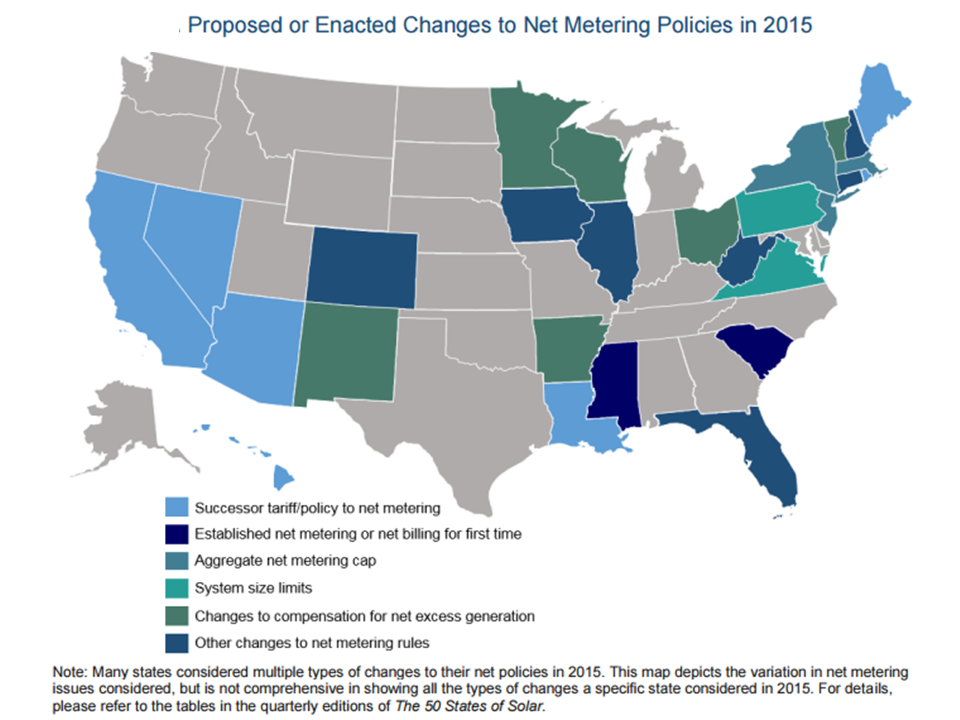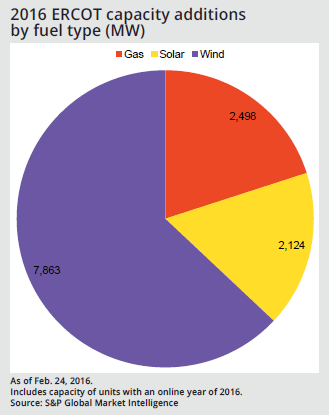This week in Energy Democracy News:
A survey of energy cooperatives in America.
Minnesota clean energy partnership receives national recognition.
Solar energy debate heads to Maine.
Featured Stories:
Breaking the macro-barriers to microgrids by Matt Grimley, CleanTechnica
Minneapolis clean energy partnership receiving national recognition by Frank Jossi, Midwest Energy News
What you need to know about energy democracy by Dees Stribling, Bisnow
Energy co-ops in America by Lucas Spangher, Huffington Post
First, consumers generally don’t have a choice over who they get their electricity from. John Farrell, a Director at the Institute for Local Self-Reliance, writes, “If you want electricity in cooperative territory, you [must] sign with the cooperative.” Martin Lowery, an Executive Vice President at the National Rural Electric Cooperatives Administration (NRECA) concurred, saying during an interview, “Certified service territories are drawn and fixed.”
Solar debate heads to cold, foggy Maine, where panels are scarce by Joe Ryan & Chris Martin, Bloomberg Business
U.S. solar installations have boomed more than 10-fold in the past five years, driven in part by a policy known as net metering that requires utilities to pay their customers for extra solar energy from rooftop panels. That’s lowered consumers’ monthly bills, and also cuts into revenue for utilities that still must contend with their own fixed costs — spurring conflict between traditional power companies and solar providers.
5 maps that show where the action is on solar policy by Herman K. Trabish, Utility Dive

Energy Democracy News In the States:
Arizona
Solar power: Shadow over solar? by Emery Cowan, AZ Daily Sun
It’s a big year for the future of Arizona’s solar energy industry by Will Stone, KJZZ
California
Slideshow: GTM research on California’s distributed energy future by Eric Wesoff, GreenTech Media
Hawaii
Hawaii Air Force unit getting own power grid that uses trash by Audrey McAvoy, Associated Press
Iowa
Lisbon considers solar panels to cut energy costs by Forrest Saunders, KCRG
Lisbon is looking at putting solar panels on five or more city buildings. It’s a move that could cut the small town’s utility bills in half. The city council is working with Energy Consultants Group to develop a plan to put panels on Lisbon City Hall, the fire department, library, history center and a community building.
Leaders were also looking at putting panels at the sewer treatment plant, which is the city’s biggest energy consumer, but shade is making placement a challenge in that area.
Maine
Solar debate heads to cold, foggy Maine, where panels are scarce by Joe Ryan & Chris Martin, Bloomberg Business
U.S. solar installations have boomed more than 10-fold in the past five years, driven in part by a policy known as net metering that requires utilities to pay their customers for extra solar energy from rooftop panels. That’s lowered consumers’ monthly bills, and also cuts into revenue for utilities that still must contend with their own fixed costs — spurring conflict between traditional power companies and solar providers.
Maine emerges as key battleground in escalating solar debate by Herb Ryder, Maine News Online
Maine community solar farms by Preti Flaherty, Energy Policy Update
Massachusetts
New guide aims to help steer solar energy into low-income communities by Katie Lannan, WWLP
Massachusetts House lawmakers, mayors, town managers push to get solar bill moving by Michael P Norton, Berkshire Eagle
A letter from 32 mayors and town managers, as well as letters from other city and town officials, including the Williamstown Board of Selectmen, have been descending on the House and Senate leadership and members of the House/Senate conference committee working on the solar legislation.
“We hope you can advance a bill to a floor vote at the earliest opportunity, in order to restore investments in our communities and allow businesses to rehire workers who lost their jobs as a result of the net metering caps,” representatives wrote in a letter organized by Reps. Cory Atkins, of Concord, and James O’Day, of West Boylston.
Representatives bid to get solar bill moving on Beacon Hill by Michael P Norton, Sentinel & Enterprise
Technology upends the utility business model by Peter Shattuck, Abigail Anthony & Mark Lebel, CommonWealth Magazine
Minnesota
Solar gardens are about to flood across the Twin Cities – here’s why by Bob Shaw, Pioneer Press
Minneapolis clean energy partnership receiving national recognition by Frank Jossi, Midwest Energy News
District approves solar panels for school roofs by Nathan Hansen, Farmington Independent
Report forecasts continued clean energy job growth in Minnesota by Frank Jossi, Midwest Energy News
Missouri
Missouri initiative petition for net metering approved by Noland Book, KFVS-12
Nebraska
Here comes the sun by Kamie Stephan, NP Telegraph
Nevada
Solar backers say PUC net metering changes unconstitutional by Geoff Dornan, Nevada Appeal
New Hampshire
Senate should approve net-metering bill by Andy Sanborn and Robert Backus, Sentinel Source
Finally, we understand that some of the utilities who have a monopoly to provide electricity may feel threatened by the rise of solar and the growing demand of homeowners who want to take advantage of their own power generation in order to control costs. The energy future of New Hampshire will look much different than the business models of the past. The Legislature and our state agencies need to do more to bring the traditional utilities and the growing solar industry together in order to make real progress on these issues.
New York
Brooklyn’s new community microgrid will allow for peer-to-peer renewable energy sharing by Derek Markham, Tree Hugger
NY community microgrid to allow peer-to-peer rooftop solar trading by Sophie Verrath, One Step Off the Grid
PSC approves increase of solar power installations by Stanley Jordan, Empire State News
No more grid-lock: More turning to renewable energy sources for power by The Troy Record
New York regulators boost size of allowable distributed resources to 5 MW by Robert Walton, Utility Dive
North Dakota
Going solar for the future by Adam Ladwig, KVRR
Ohio
Kasich committed to letting freeze on renewable energy mandates thaw; permanent ban is “off the table” by Tom Henry, Toledo Blade
Report: Big benefits possible with solar on low-income homes by Kathiann M. Kowalski, Midwest Energy News
Ohio utilities skeptical of renewable energy ballot initiative by Matthew Bandyk, SNL
This small town generated $2 million from selling RECs, now they have to decide what to do with the money by Carl McDaniel & David Sonner, EcoWatch
But, several city council candidates campaigned hard on terminating the coal contract and won. The new council majority canceled the contract and instructed city staff to seek alternatives in renewable and carbon-neutral energy sources. Oberlin began shifting aggressively to non-fossil fuels, despite obstacles by those who didn’t believe coal or climate destabilization was a serious problem.
Today, Oberlin’s electricity comes from a portfolio of 90 percent renewables and carbon neutral energy sources that have associated RECs. RECs were created in the late 1990s by states to provide an economic incentive to abandon fossil fuels for renewables in electricity generation.
Oregon
Oregon just used its Democratic majorities to pass a wildly ambitious clean energy bill by David Roberts, Vox
Texas
Wind, solar to make up nearly two-thirds of ERCOT’s 2016 capacity additions by Ashleigh Cotting, SNL
Another roughly 8,000 MW of wind capacity is expected to come online in 2016, bringing the resource’s total in ERCOT to about 24,000 MW, or 21% of the region’s fuel mix. Some specific projects are going to be located outside of ERCOT’s geographic region but are still considered part of ERCOT’s resource mix because their output will be delivered into the ERCOT market. About 2,000 MW of new solar capacity is expected to become available this year as well, a nearly 10-fold increase over the amount of solar operating in 2015.

How Austin Energy aims to reach solar-plus-storage integration at 14 cents per kilowatt-hour by Jeff St. John, GreenTech Media
Vermont
Giving Vermonters a greater voice in our energy future by Christopher Bray, Rutland Herald
Wisconsin
In Wisconsin, rural co-ops powering state’s solar growth by Kari Lydersen, Midwest Energy News
Nationwide Energy Democracy News:
Got Denmark envy? Wait until you hear about its energy policies. by David Roberts, Vox
Many countries have found, when they try to increase the number of small-scale, distributed energy resources, they run into a lot of NIMBY opposition. (More on that subject here.)
The Danes thought ahead. There are policies in place to compensate homeowners for any lost value that comes with nearby siting of power, and each power project is required to set aside 20 percent of its shares for local buy-in and ownership. Consequently, the benefits of decentralized power are more widely shared and opposition is muted.
How to fix solar power’s inequality problem by Julian Specter, CityLab
Lower-income households also typically spend a higher percentage of their income on energy than richer families, so they have more to gain from reducing their power bills through clean energy. Additionally, disadvantaged neighborhoods have a higher risk of suffering from air pollution and other nasty byproducts of dirty power generation, not to mention the effects of climate change spurred by those carbon emissions. That, and the fact that these populations tend to be people of color, brings this into the realm of environmental justice: When the people who are most harmed by traditional energy also have the least access to the benefits of clean energy, there’s a problem.
Utility & community solar should use native landscaping by Jeffrey S. Briberg, CleanTechnica
Navigant research: Annual revenue for residential distributed energy resources is expected to exceed USD 92.7 billion in 2025 by Solar Server Magazine
National grid to test new utility microgrid services by Elisa Wood, Microgrid Knowledge
It doesn’t have to be a battle between utilities & solar power providers by Ken Munson, CleanTechnica
Are residential demand charges the best rate reform for DERs? by Krysti Shallenberger, Utility Dive
In many cases, these demand charges account for a substantial portion of a customer’s bill, creating a significant incentive for the consumer to reduce peak usage. Customers can do that through a variety of actions — from leveraging solar panels to generate during peak hours to deploying storage to store energy for peak demand periods and utilizing home energy management tools to track and reduce usage.
$2 billion loss for generators as a million U.S. roofs get solar by Jonathan Crawford, Bloomberg
The rooftop solar-electric utility war reaches new heights by Seeking Alpha
Report: US generators face $2B in lost revenues from rooftop solar by Herman K. Trabish, Utility Dive
Solar advocates have their eyes on low-income communities by Samantha Page, Think Progress
Solar power has been criticized for helping the wealthy and punishing the poor. Some groups — largely, it should be noted, utilities and advocacy groups funded by fossil fuel interests — say only affluent people can afford solar, leaving less-affluent people to pay more than their share for the grid.
But it turns out that in the battle to transition to a cleaner, more networked grid, low-income communities are the next big front.
To thrive, microgrids must help the macrogrid by Carl Weinschenk, Energy Manager Today
Is solar power worth it? by Leah Becerra, Newsy
Efficiency, solar and storage offer a unique opportunity to bring clean energy to affordable housing by Wayne Waite and Lewis Milford, GreenTech Media
In the last five years, solar PV costs have declined to the point that standalone solar PV systems can be financially feasible for affordable housing owners and at times more feasible than deeper energy-efficiency retrofits. As a result, solar PV is increasingly credible as a way to offset electricity consumption after a first level of energy efficiency retrofitting. At a policy level, providing incentives to finance solar access for low-income communities has emerged as a second significant step for reducing energy costs for low-income renters in affordable housing.
The growing importance of distribution in grid planning by Martin Shalhoub, Intelligent Utility
Is the Microgrid Industry missing the message about local energy? by Elisa Wood, Microgrid Knowledge





